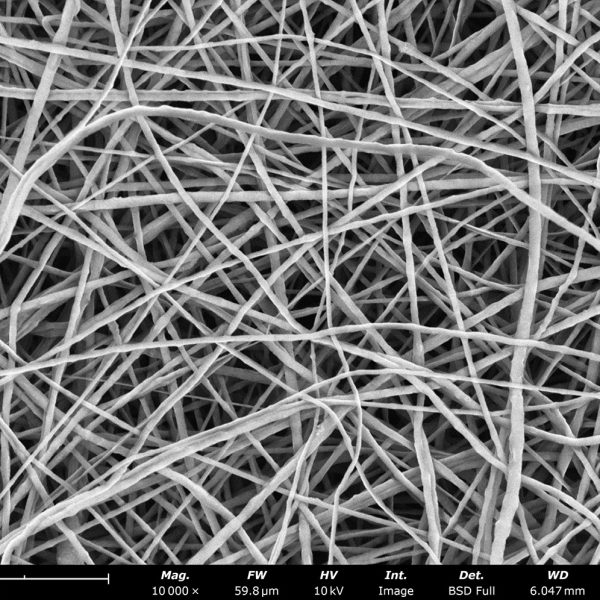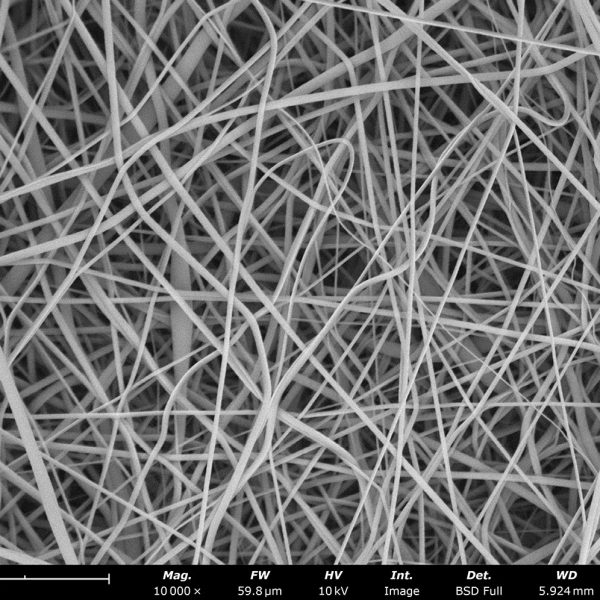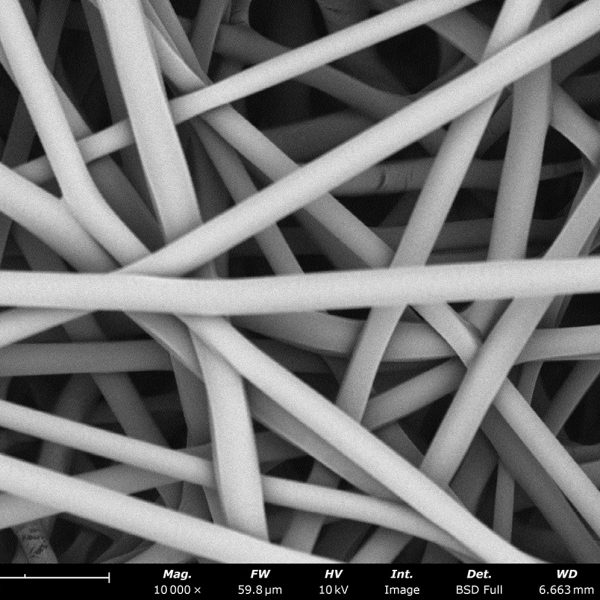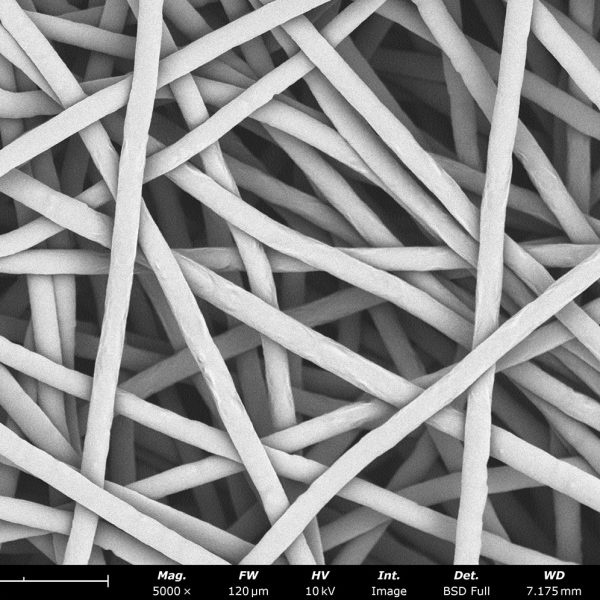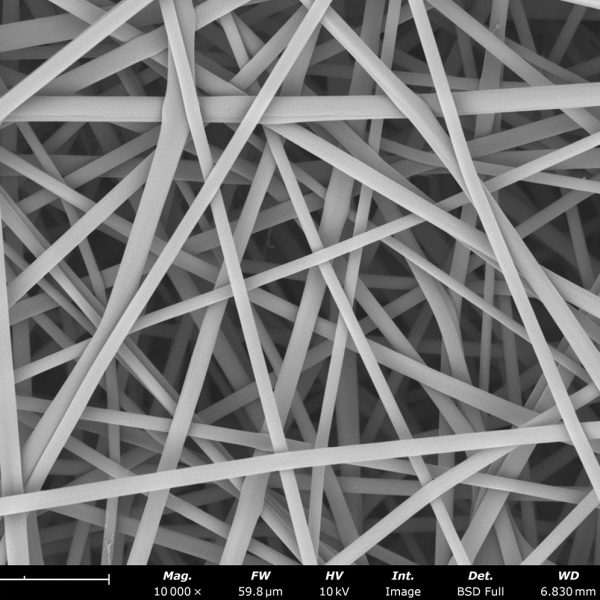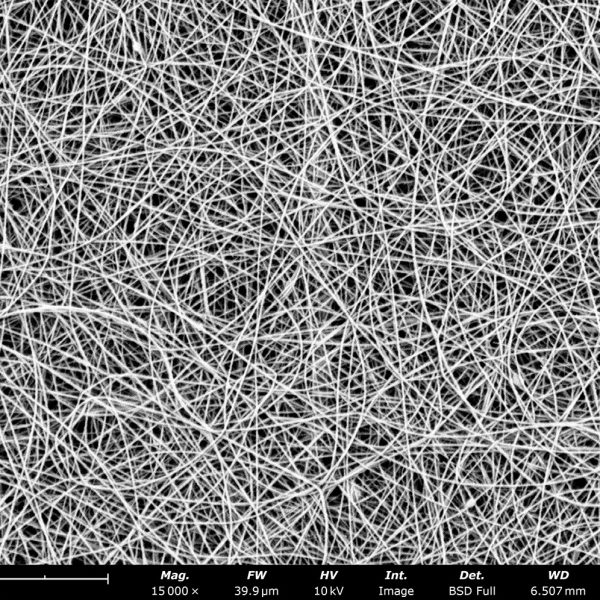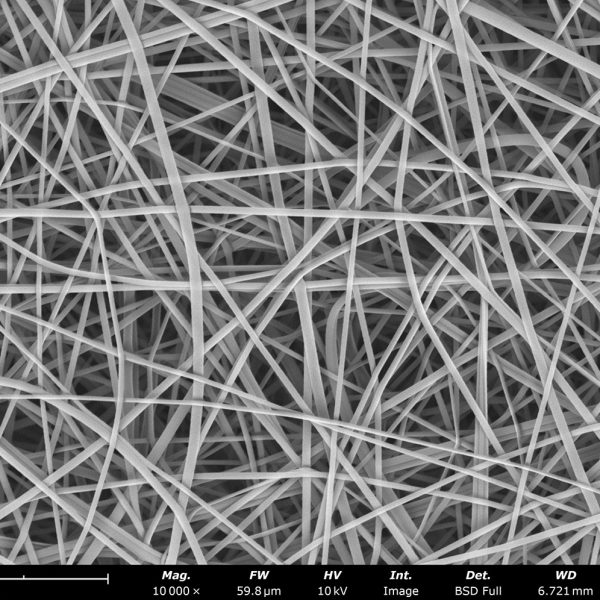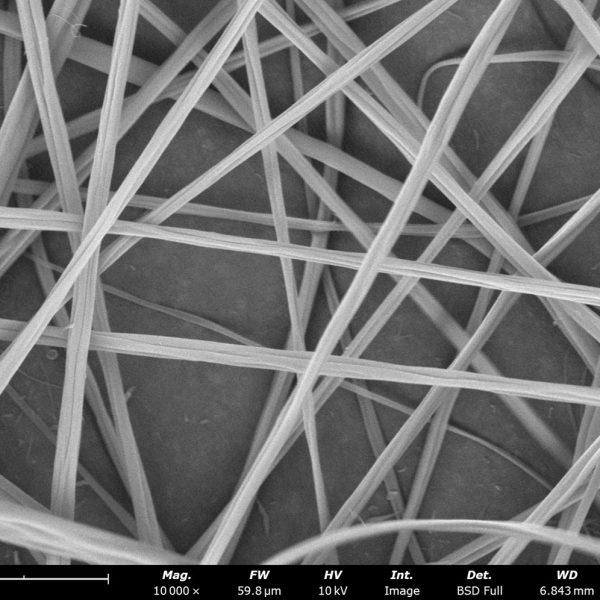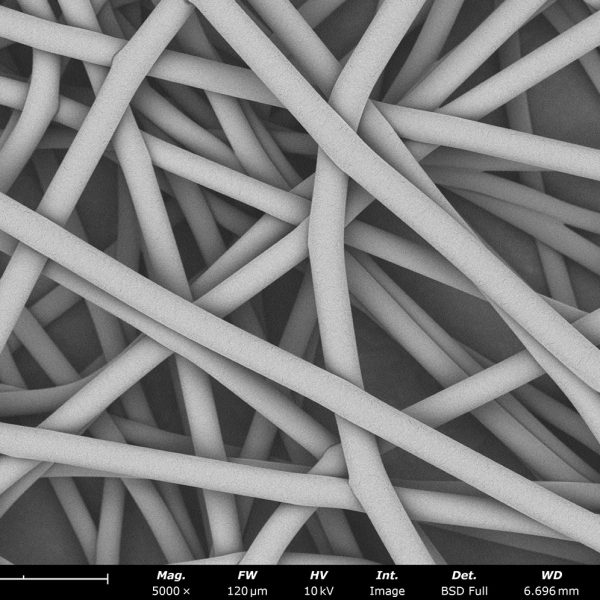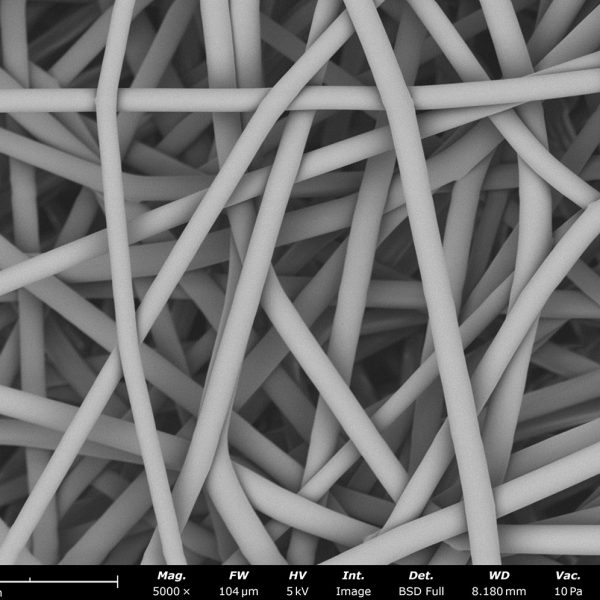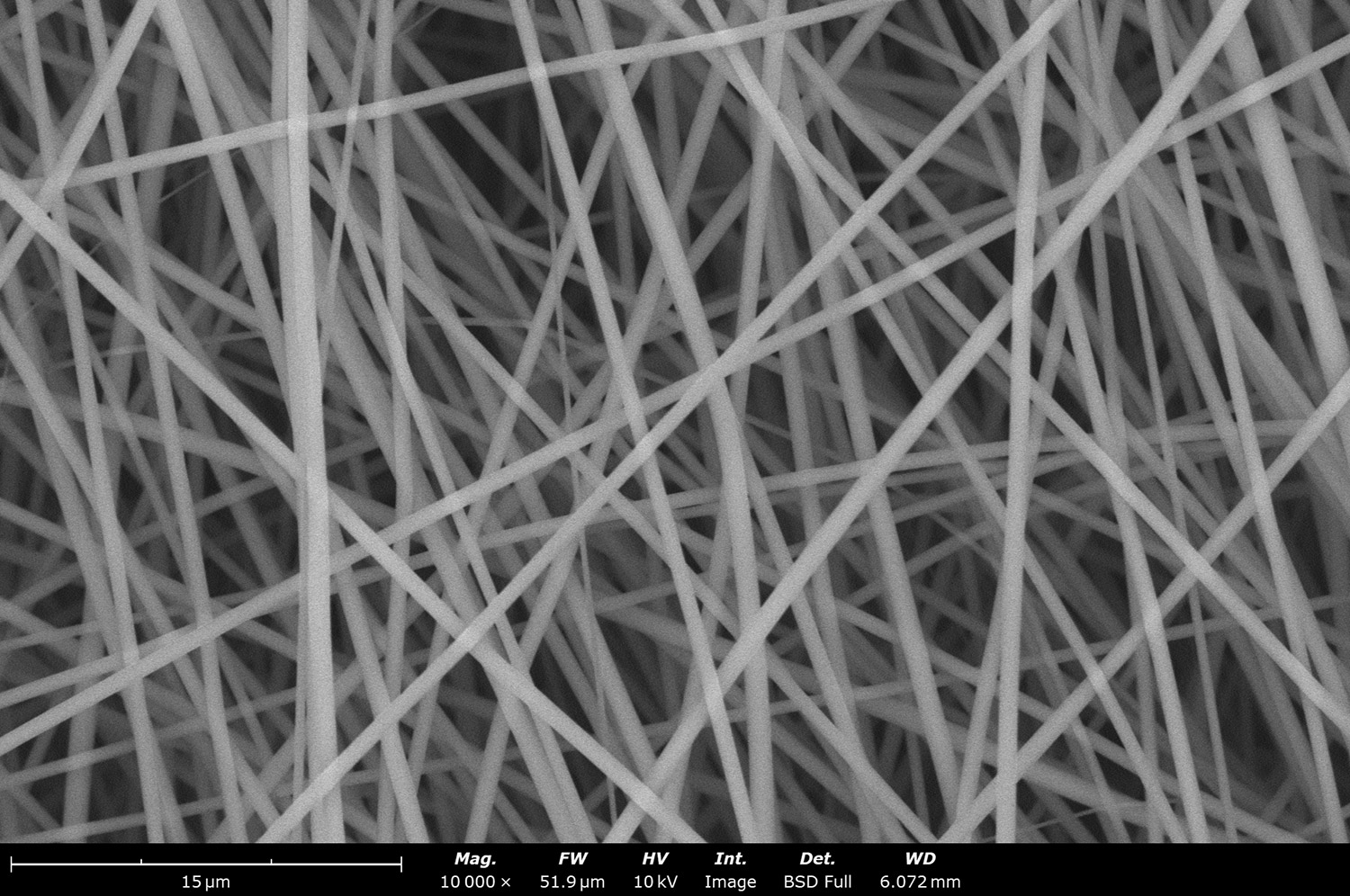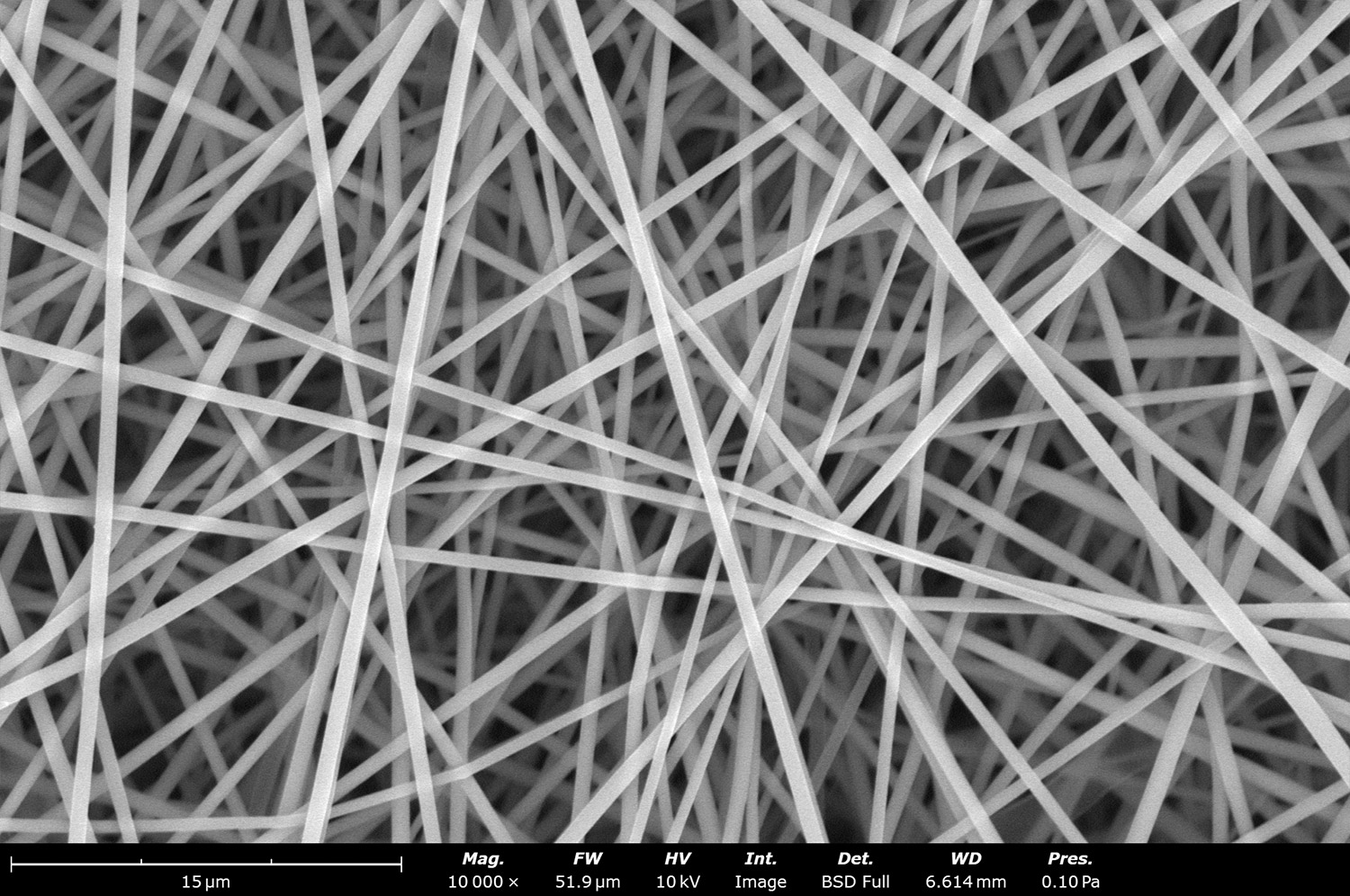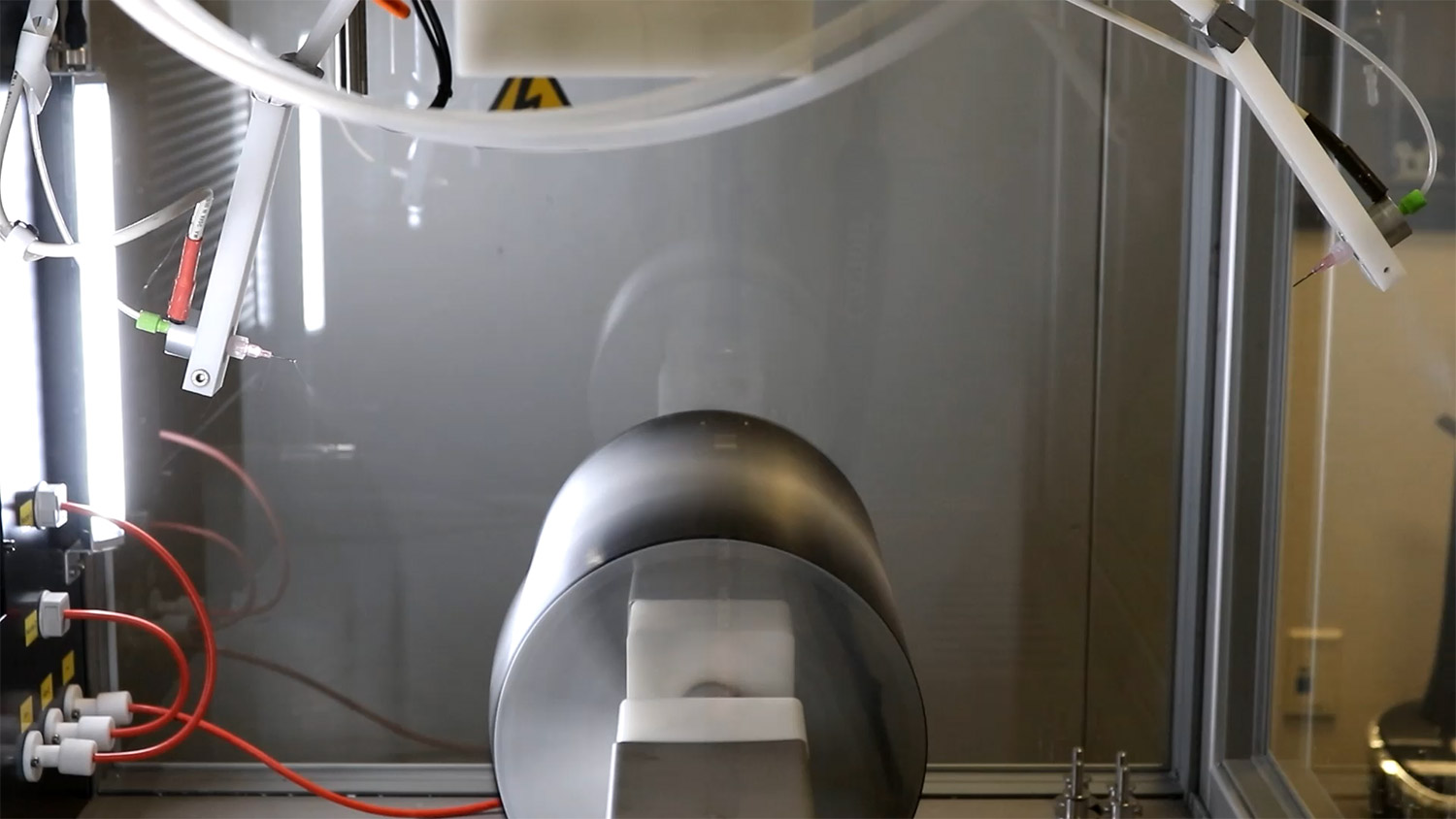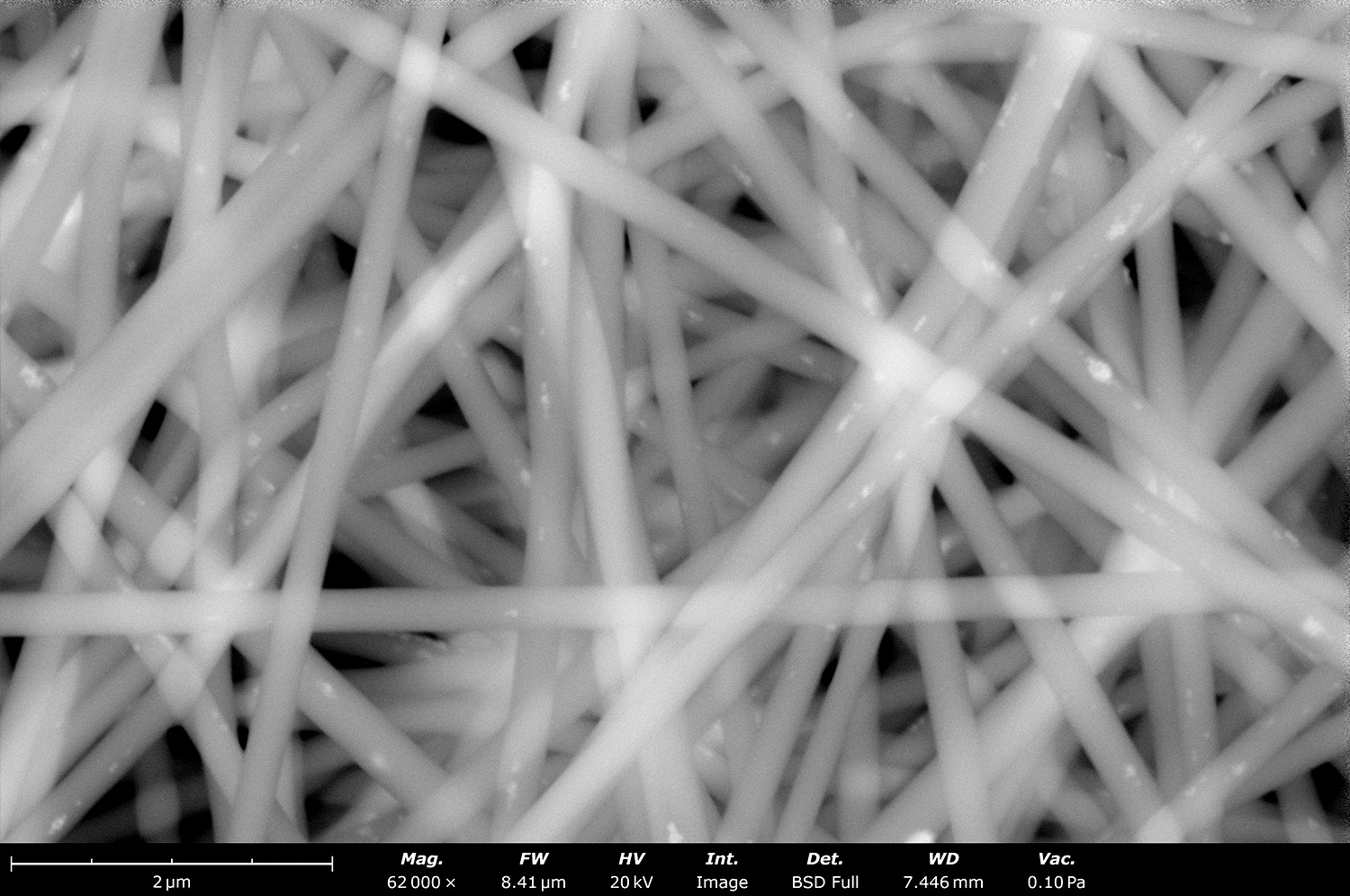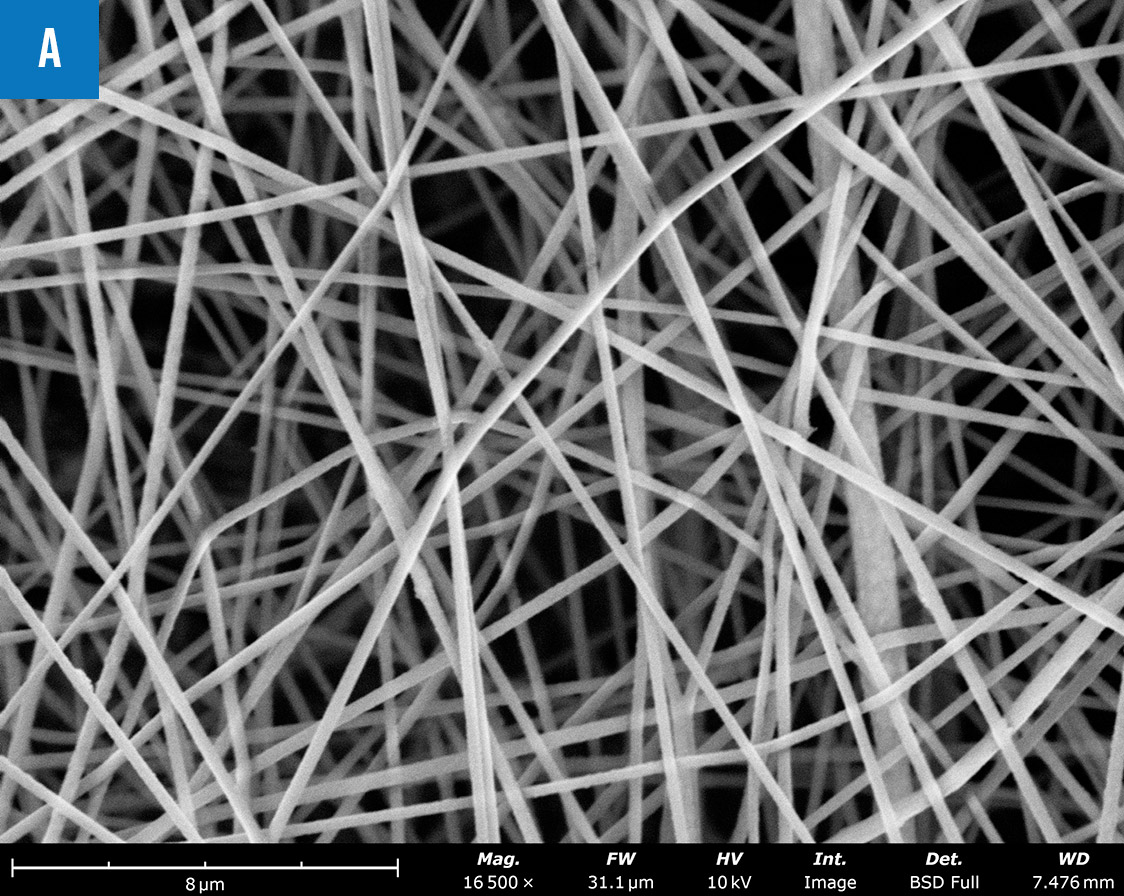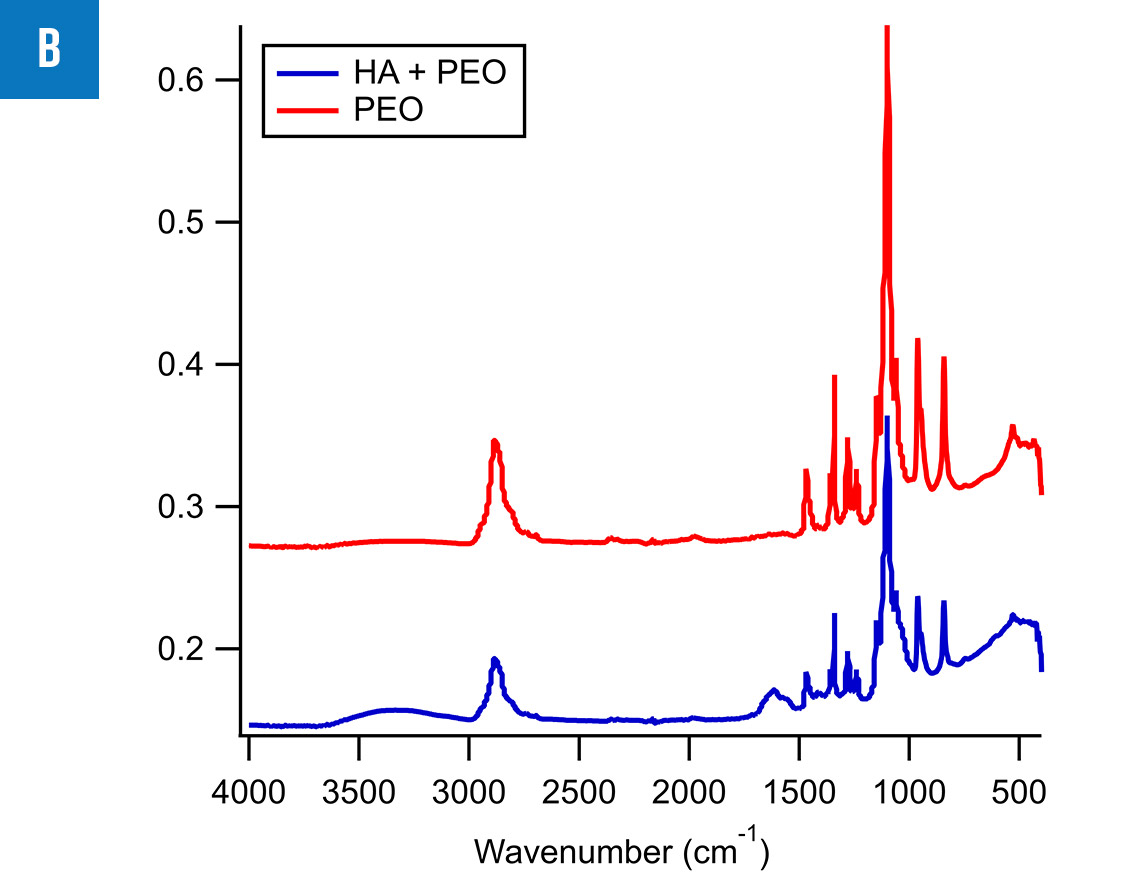Electrospun Fiber Development
Electrospun Fibers
A variety of fibers can be fabricated based on the application need including single polymer, polymer blends, additives incorporated fibers (inorganic particles, API’s). A sampling of different polymer fiber types are listed below.
Polymer Library
Fiber Examples:
Blended Polymer Fibers:
Some polymers used for electrospinning can be combined as homogenous blend. This is usually done when a single polymer by itself does not provide the required fiber characteristics, such as, one polymer provides the functional characteristics while the other provides the structural. For example, PCL can be blended with gelatin to yield fibers that have bioactive factors from gelatin while having structural integrity from PCL.
Example image of PCL fibers blended with gelatin at a 1:1 ratio (left), tri-blend of polyvinylpyrrolidone/collagen/hyaluronic acid (right)
The ratio between the polymers can also be controlled to achieve the intended results. Furthermore, polymer blends can include more than 2 polymers that produce a tri or even quad blend of polymers.
Co-spun Polymer Fibers:
Rather than electropsinning a blend of polymers, fiber mats can be developed that consist of two or more distinct fiber populations by co-spinning. During co-electrospinning, two or more polymers are electrospun from different emitters at the same time onto a collector. The collector allows for complete intermixing between the population to yield a heterogenous mat. Unlike blended fiber populations, co-electrospinning allows for two or more solutions that can be electrospun with different solvent systems.
For example, water-based polymers can be co-electrospun with hydrophobic polymers. Controlling the flowrate of each polymer will tune the ratios between the two distinct fiber populations. Many applications could benefit from co-spinning including incorporating a high ionically conductive fiber population for battery/energy applications, using a water-soluble polymer to generate a sacrificial fiber population to increase pore size, and incorporating a bioactive polymer within a fiber population to promote tissue healing or antiaging properties.
Fibers with inorganic particles:
Nanofibers can be electrospun with a blend of polymers and inorganic nanoparticles. Some of the applications of such nanofibers include:
- TiO2 nanoparticles incorporated fibers used as solid-state electrolytes in batteries.
- Platinum nanoparticles within electrospun fibers function as catalysts within fuel cells.
- Silver nanoparticles within electrospun wound dressings as an antimicrobial.
Fibers with Active Pharmaceutical Ingredients (API’s):
APIs can be incorporated into electrospun fibers. Tuning the polymer, fiber diameter, and pore size can control the delivery rate of the API. Some fibers can be designed with quick delivery on the scale of a few days, other polymers will release the API over the course of a few years. For example, Hyaluronic acid can be blended within Polyethylene oxide electrospun fibers for wound healing or cosmetic applications.
(A) SEM images of PEO-based fibers blended with active ingredient hyaluronic acid (B) FTIR spectrum of nanofiber sheets made with PEO/hyaluronic acid blend. Lines represent local peaks that correspond to OH and C = O groups.
Contact Us
We are a multi-disciplinary laboratory committed to providing our expertise and efficient analytical services.

